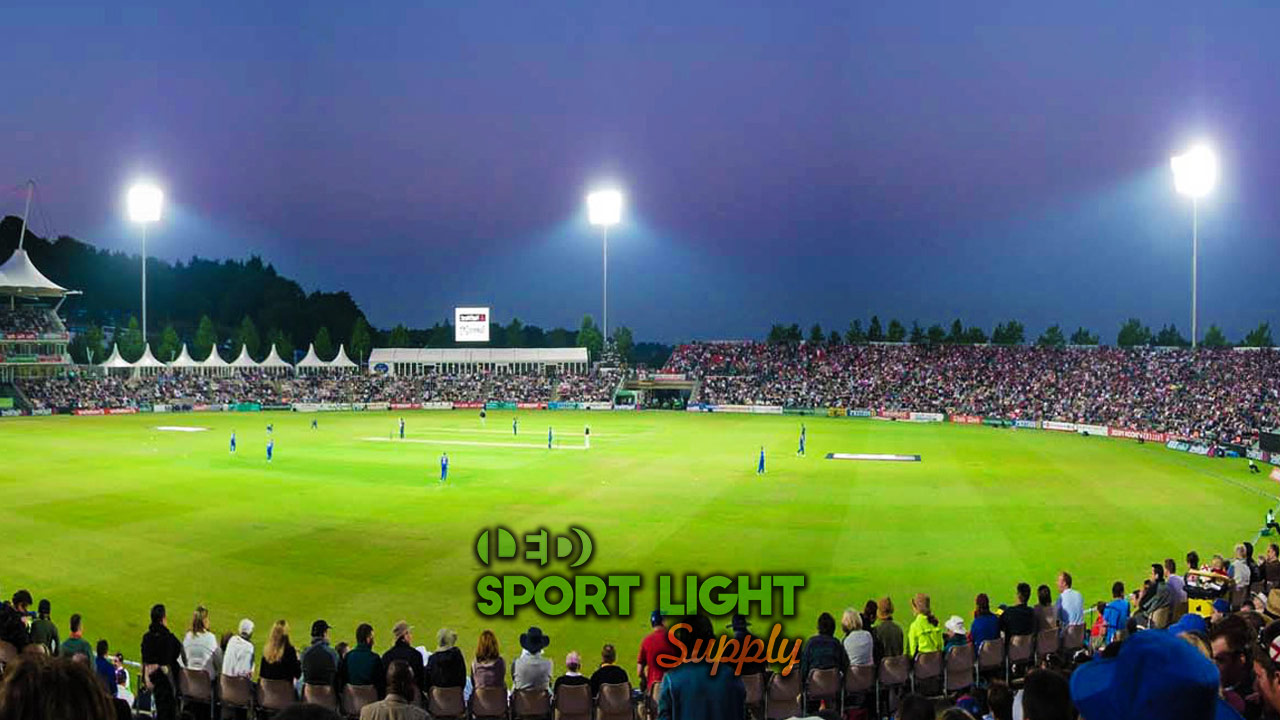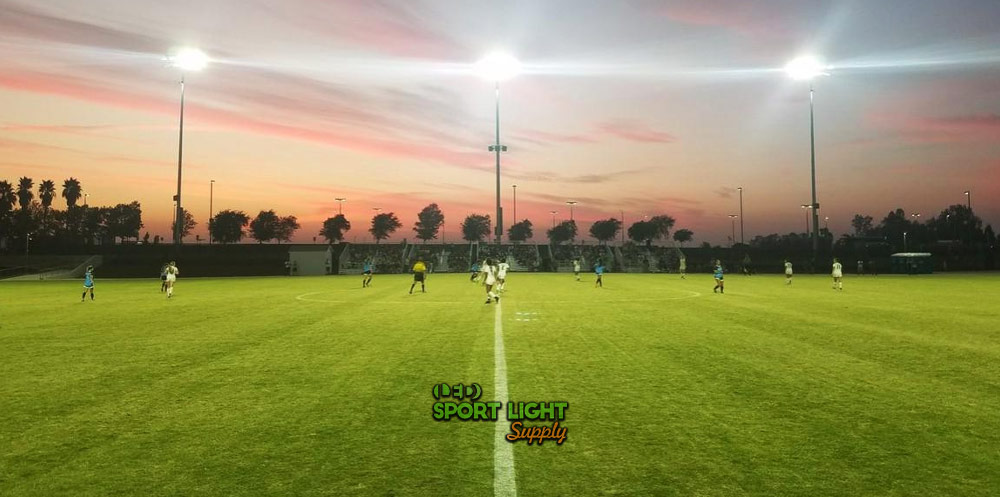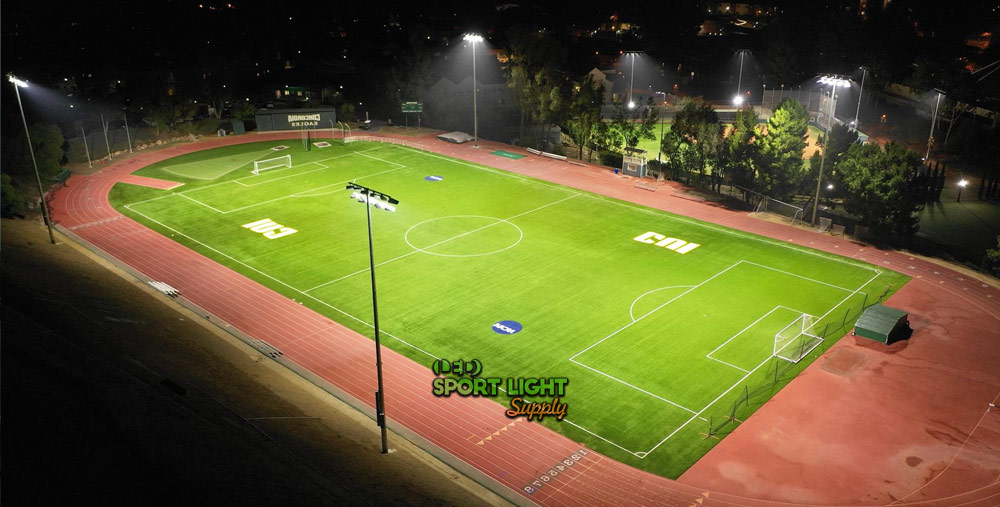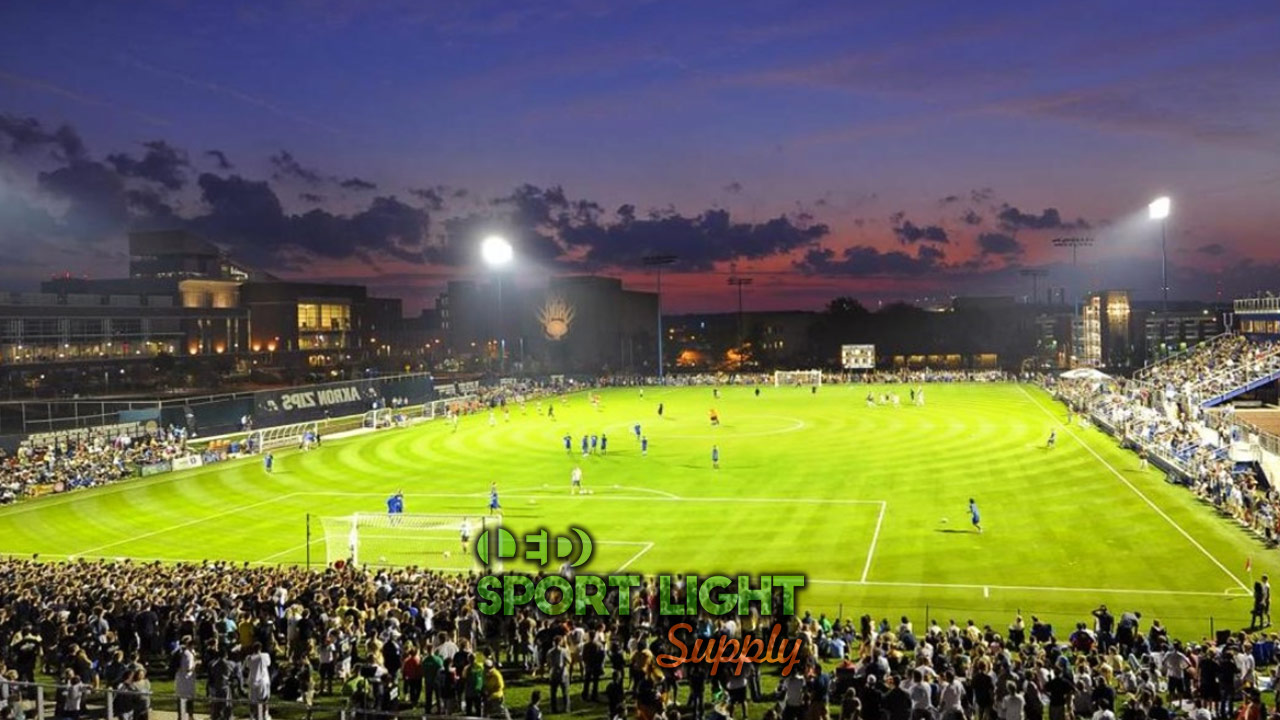In this short article, we will be looking at various aspects of selecting the best LED lighting installation for your sports field. It is designed so that you will be able to understand some of the terms used in a specification supplied by installers.
Installing lighting on your sports field can provide a lot of benefits to both fans and players. It will make game scheduling much easier, and it will enhance the overall experience of fans and probably increase attendance. However, you need to consider the local community’s reaction to your plans, especially those of immediate neighbors who may not welcome such a change. There may be zoning regulations and ordinances related to the levels of glare that are permitted near highways.
Is a suitable power supply available, and is there space to set backlighting poles? Most systems typically require that poles are set back between 50′ to 100′. What about access to heavy equipment during the installation? There are many issues to consider, including understanding Sports Lighting specifications.
What specifications should we look for when buying sports lighting?
Some of the terms used when discussing sports lighting can be confusing if you do not deal with the day today. We will investigate some of the factors related to the installation of sports field lighting.
1. Lux levels requirement

The lighting levels on a sports field will be measured with a light meter (or lux meter). The results given from this reading are in Lux. A Lux is defined as Lumens divided by square feet. When designing sports field lighting, the aim is to provide uniform lighting levels across the field.
Stadium/Sports field lights are powerful mounted high. They typically have small beam angles. The beam angle will depend on the height at which the light is mounted. The height may be anything between 40 ft to 100 ft, with potentially between 1 and 12 lights on each pole.
Most sports bodies have specific lighting requirements that relate to the level of competition:
- Class 1 – Top Level Competition
- Class 2 – Intermediate Level Competition
- Class 3 – Lower Level Competition and Supervised Training
Lighting for events that are being broadcast additionally has its own lighting requirements.
If we take Football (soccer) and Tennis as examples (football with large balls, and Tennis with a much smaller ball), we can see different requirements. The recommended lighting requirements vary according to the country or even from state to state. These levels have been decided by either governing bodies or local government depending on the sport.
Recommended Requirements for the minimum lighting Levels
- Class 1 – 500 Lux Football / 500 Lux Tennis
- Class 2 – 200 Lux Football / 300 Lux Tennis
- Class 3 – 75 Lux Football / 200 Lux Tennis
Most of the information on standards can be obtained online; the best place to check the standards is the NCAA website. On this site, you can find diagrams for recommended layout and other technical specs.
2. Power and Lumen
Put quite simply; Power is the amount of energy the bulb will consume. We used to rate light bulbs on the wattage; this is no longer relevant; we now use Lumens to rate the amount of light given out by a bulb.
| Lumens | Traditional bulbs | LED Bulbs |
| 1530lm | 100W | 9W |
| 2040lm | 200W | 12W |
| 3400lm | 350W | 20W |
| 8500lm | 800W | 50W |
In this article, we are looking primarily at LED, but I have included this brief comparison so that you can compare LED with other popular options.
| Light source | Luminous efficacy |
| LED | 130 to 170 lumens per watt |
| Metal halide | 60 to 75 lumens per watt |
| Halogen | 10 to 15 lumens per watt |
We can see from this how much more efficient LED is.
3. Color temperature
This is measured using the Kelvin Scale. This rating was frequently not considered when installing lights before 2010, but now in the age of LED, it is more important.
| Light color | Color temperature |
| Warm white | 2700 to 3000K |
| Natural daylight | 4000K |
| Cool white | >5000K |
When selecting color temperature for sports use, the recommendation is to go for 5000K lights, which are more akin to natural light.
4. Beam Angle
Getting the beam angle right when designing a sports field lighting installation is very important. Getting the angles right will produce an even light across the field with no dull spots or blinding cross beams.
The most common stadium lights have a 30º beam angle and will produce a 50-foot diameter circle of light from 30 feet. From 50 foot it will produce a 70-foot circle of good light. Lights should be mounted at 40 feet to 60 feet.
The beam angle is the angle that light is distributed over the field. Some LEDs come in a variety of angles that may run from 4º to 60°. It is helpful if you understand some of the abbreviations used when talking about this subject.
| Beam angle type | Angle |
| SP (spot) | 4º to 19º |
| FL (flood) | 20º to 35º |
| WFL (wide flood) | 36º to 49º |
| VWFL (extensive flood) | 50º to 120º |
Stadium or sports field lights are usually mounted high and have beam angles typically between 12º and 60º. With smaller beam angles, the higher light intensity is provided within the angle, allowing it to hit the ground at a higher intensity.
5. Glare

Looking into the beam of a traditional HID lighting fixture is not dissimilar from looking directly at the sun, and the glare becomes an issue that can affect a game. Work-around is produced, which includes placing anti-glare shields in front so that light is diffused. This is unnecessary in some modern LED lights where the LED engines are installed in a ring around a blank center section that eliminates the hotspot.
In venues where there is the possibility of TV coverage glare can be quite a problem in badly designed systems. LED makes this issue far less likely than with outdated lighting systems.
6. LED Driver
The LED Driver has several functions; power conversion, regulation of loads, and the protection of components downstream. The LED driver is also where we connect smart technology and lighting controls. However, a good LED is at producing intense light; the system can only ever be as good as the LED Driver. In short, it is a critical component.
Unlike regular lighting, LED lighting requires a constant DC. If connected to an AC, the lights will flicker as they only work when the current is in the correct polarity. LED drivers are instrumental in converting the AC power supply to the correct DC. The two terms LED driver and LED Power Supply is used interchangeably during conversations.
7. Heat Sinks
Despite LED lights running considerably cooler than traditional lighting, they still require heat sinks to conduct heat away from the LED junction and convects that heat out into the air. An LED heat sink is simply a heat exchange that dissipates heat from the LEDs into the surrounding air.
8. Pole Arrangements
a) 4-Pole Arrangements

Four pole arrangements typically have two poles located on each side of the field. With four poles, they need to be situated further from the sidelines.
b) 6-Pole Arrangement
Six pole arrangements include three poles on each side, which can be brought closer to the sidelines.
When deciding the beam angle, it is necessary to cover the field with the maximum amount of light without hotspots. Each pole’s coverage should overlap the coverage from adjacent poles. The lights should be mounted at a 50-foot height minimum for optimum performance. Higher mounting will reduce glare.
Ongoing Costs of Sports Field Lighting
Before you think about installing sports field lighting, it is prudent to consider the ongoing running lighting costs on your sports field. Here is a quick rundown of what is involved.
In the USA, the average hourly cost of running stadium lights for 4 hours a night and 15 nights a month works out at $400 a month for LED ($800 for Metal Halide). That is quite a saving by choosing LED.
Then, of course, there are ongoing maintenance costs. LED lights will typically last eight times longer than Metal Halide, which once again is going to save a lot of money and inconvenience.
The lifetime of an installation is a big factor in looking at costs. LED lamps will last over 20 years compared to Metal Halide, lasting just 2 or 3 years.
Yes, LED lights will have a slightly higher original cost, but with savings on electricity and maintenance that will soon be recovered. In fact, installing outdated old technology would certainly be something you would regret when calculating the ongoing costs.
Final Thought
Clearly, from this information, not only does LED lighting produce a better lighting system for your sports field, more efficient, with less hazardous glare, but it is more economical to run and maintain. The key to getting the best possible deal is to understand what specifications from suppliers actually mean, and we hope that this short guide has served to explain the key aspects are much clearer.





